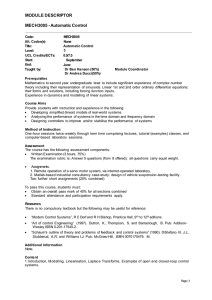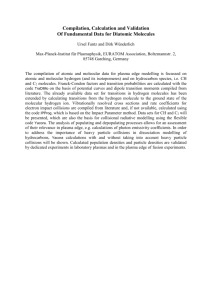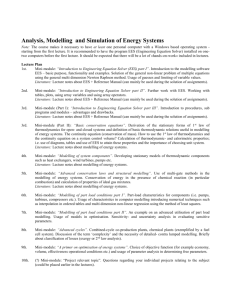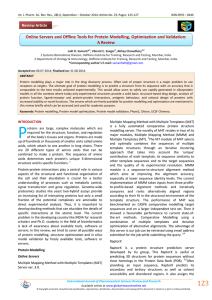Name of the study programme component:
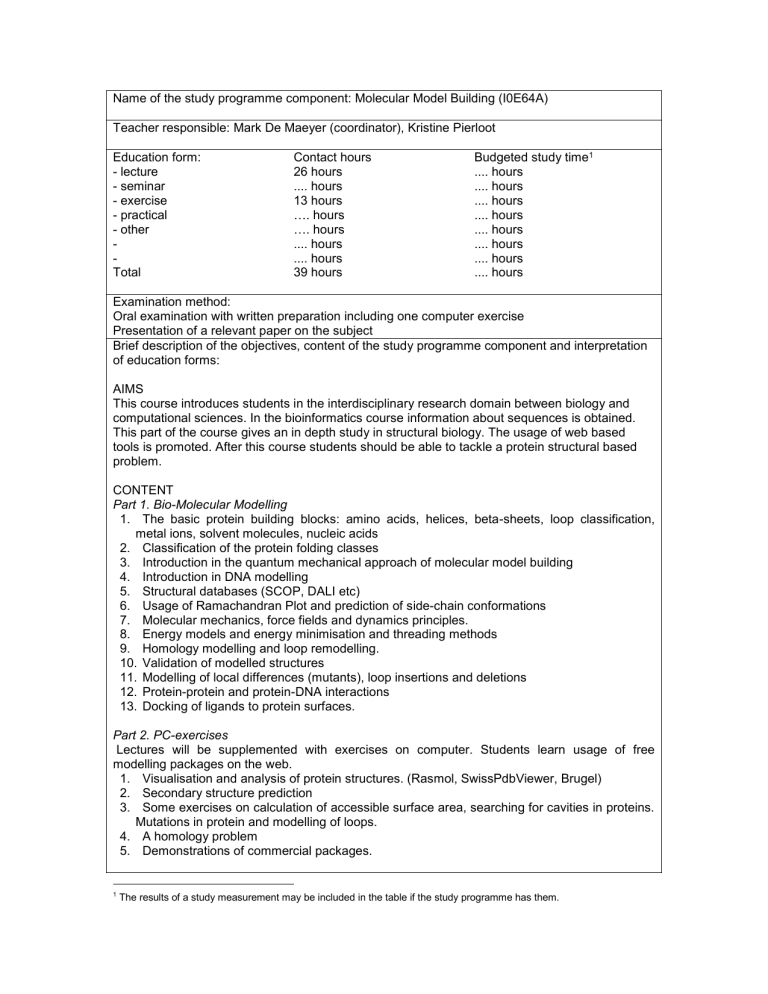
Name of the study programme component: Molecular Model Building (I0E64A)
Teacher responsible: Mark De Maeyer (coordinator), Kristine Pierloot
Education form: Contact hours Budgeted study time 1
- lecture
- seminar
- exercise
- practical
- other
-
-
Total
26 hours
.... hours
13 hours
…. hours
…. hours
.... hours
.... hours
39 hours
.... hours
.... hours
.... hours
.... hours
.... hours
.... hours
.... hours
.... hours
Examination method:
Oral examination with written preparation including one computer exercise
Presentation of a relevant paper on the subject
Brief description of the objectives, content of the study programme component and interpretation of education forms:
AIMS
This course introduces students in the interdisciplinary research domain between biology and computational sciences. In the bioinformatics course information about sequences is obtained.
This part of the course gives an in depth study in structural biology. The usage of web based tools is promoted. After this course students should be able to tackle a protein structural based problem.
CONTENT
Part 1. Bio-Molecular Modelling
1. The basic protein building blocks: amino acids, helices, beta-sheets, loop classification, metal ions, solvent molecules, nucleic acids
2. Classification of the protein folding classes
3. Introduction in the quantum mechanical approach of molecular model building
4. Introduction in DNA modelling
5. Structural databases (SCOP, DALI etc)
6. Usage of Ramachandran Plot and prediction of side-chain conformations
7. Molecular mechanics, force fields and dynamics principles.
8. Energy models and energy minimisation and threading methods
9. Homology modelling and loop remodelling.
10. Validation of modelled structures
11. Modelling of local differences (mutants), loop insertions and deletions
12. Protein-protein and protein-DNA interactions
13. Docking of ligands to protein surfaces.
Part 2. PC-exercises
Lectures will be supplemented with exercises on computer. Students learn usage of free modelling packages on the web.
1. Visualisation and analysis of protein structures. (Rasmol, SwissPdbViewer, Brugel)
2. Secondary structure prediction
3. Some exercises on calculation of accessible surface area, searching for cavities in proteins.
Mutations in protein and modelling of loops.
4. A homology problem
5. Demonstrations of commercial packages.
1
The results of a study measurement may be included in the table if the study programme has them.
EDUCATIONAL FORM
Lectures
Exercise sessions in PC classes
Students have to present an actual paper on bio-modelling
Literature consulted:
- Tamar Schlick. Molecular modeling and simulation. Publisher: Springer, ISBN: 0-387-95404-X.
- Carl-Ivar Branden & John Tooze: Introduction to protein structure, second edition. Publisher:
Garland Publishing, 1999. ISBN 0-8153-2305-0
- R. Leach: Molecular Modelling. Principles and Applications. Addison Wesley (1996) ISBN: 0-
582-23933-8
- Ph. E. Bourne & H. Weissig: Structural bioinformatics. Wiley-Liss (2003) ISBN 0-471-20200-2
